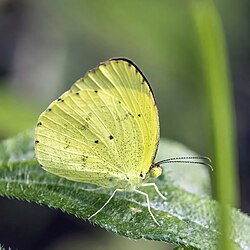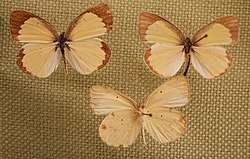| Eurema lisa | |
|---|---|
 | |
| Male | |
 | |
| Female Both P. l. centralis in Belize | |
| Scientific classification | |
| Kingdom: | Animalia |
| Phylum: | Arthropoda |
| Class: | Insecta |
| Order: | Lepidoptera |
| Family: | Pieridae |
| Genus: | Eurema |
| Species: | E. lisa |
| Binomial name | |
| Eurema lisa | |
| Subspecies | |
| |
| Synonyms | |
Eurema lisa, commonly known as the little yellow, little sulphur or little sulfur, is a butterfly species of subfamily Coliadinae that occurs in Central America and the southern part of North America.

